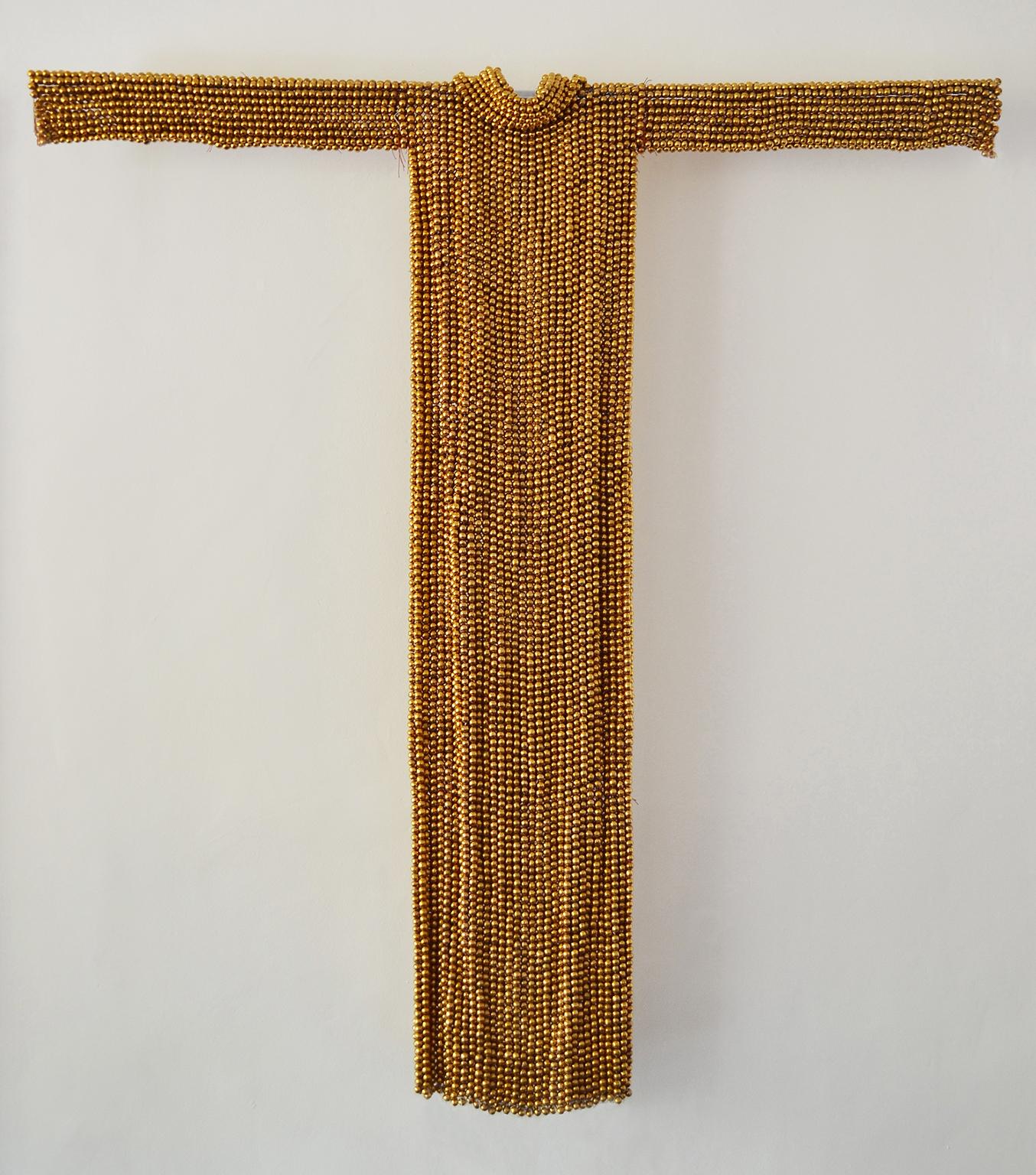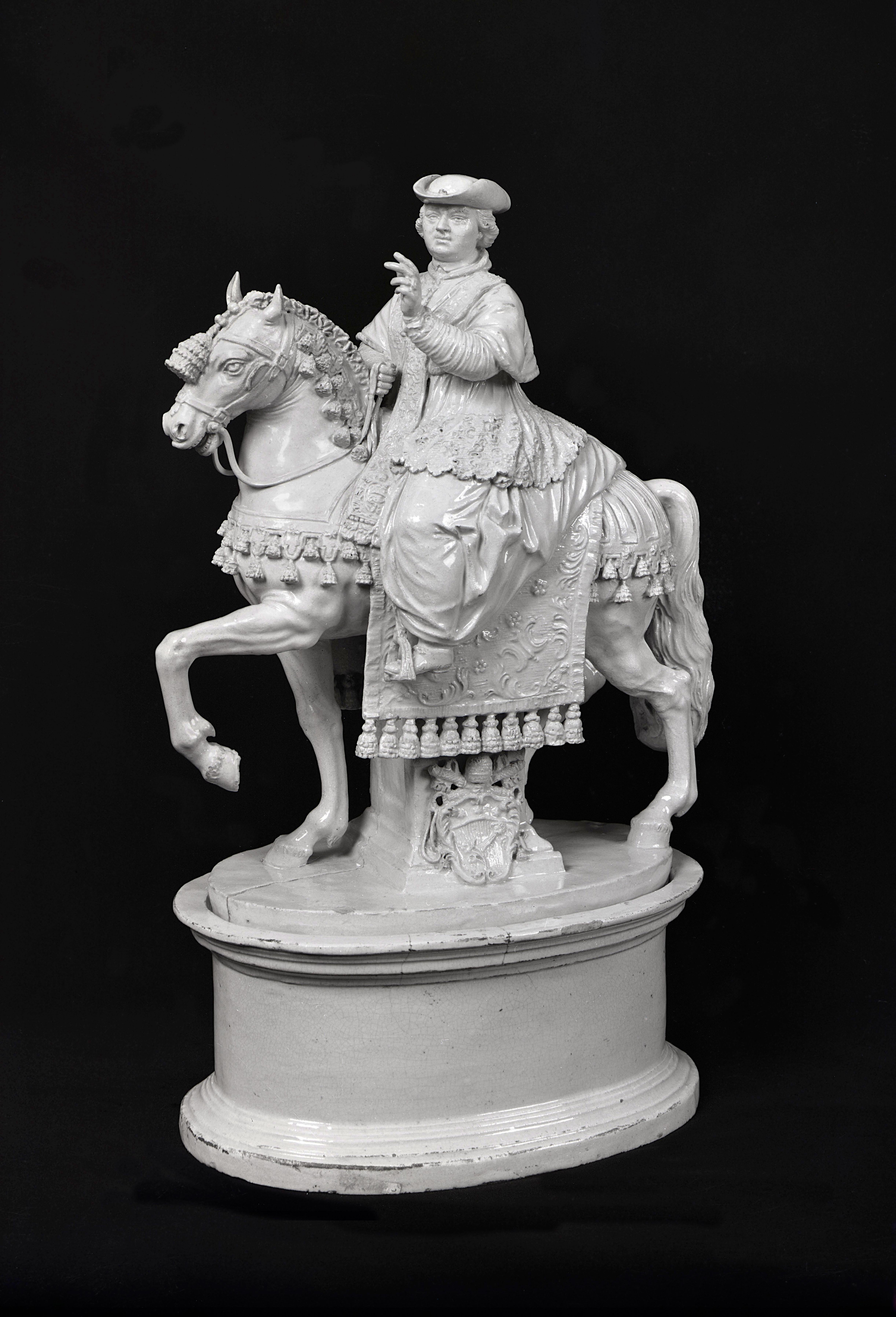Items Similar to Head of a Young African Man
Want more images or videos?
Request additional images or videos from the seller
1 of 4
Italian School, ca. 1800Head of a Young African Manca. 1800
ca. 1800
About the Item
Provenance: Private Collection, Spain.
This intriguing and enigmatic sculpture depicts the head of a young African man emerging from a circular opening or window. He is seen in three-quarter profile, his eyes partially closed, but with a resolute expression punctuated by his surging hair. He seems neither an allegorical figure, nor an ethnographic type. Were it not for the highly unusual format, the specificity of his features would suggest that he is the subject of a portrait. The function of the work remains a mystery. Its scale, material, and degree of finish suggest that it was a model for a larger work—whether an architectural ornament, an element of a multi-figure composition, a funerary or commemorative monument, or some grand sculptural project.
As an individual head seen in isolation it seems to evoke a range of associations—resignation, resistance, solitude. And the visual ties to images of the head of Saint John the Baptist on a salver, whether or not intended by the artist, gives additional resonance to the piece. The octagonal surround as well as the inner frame are integral with the head, and as the work does not correspond to any familiar class of object—whether artistic, decorative, or utilitarian—it seems likely that our sculpture could have been retained in the studio of the unknown artist who modeled it. On the basis of its high quality and style, we have suggested that it is Italian of the late 18th or early 19th century, but as with its purpose, its origin and date remain to be discovered, although its beauty can be appreciated despite the lack of art-historical context.
- Creator:Italian School, ca. 1800 (Italian)
- Creation Year:ca. 1800
- Dimensions:Height: 9 in (22.86 cm)Width: 8.625 in (21.91 cm)
- Medium:
- Period:
- Condition:
- Gallery Location:New York, NY
- Reference Number:1stDibs: LU10212237532

About the Seller
5.0
Recognized Seller
These prestigious sellers are industry leaders and represent the highest echelon for item quality and design.
Established in 1997
1stDibs seller since 2012
17 sales on 1stDibs
Typical response time: 11 hours
- ShippingRetrieving quote...Ships From: New York, NY
- Return PolicyThis item cannot be returned.
More From This SellerView All
- Portrait of Ni-PologLocated in New York, NYSigned, dated, and inscribed on the verso: Malvina Hoffman/ Den Pasar/ “Nipolog”-/ © 1932/ Bali Provenance: The artist; her estate. Literature: Mal...Category
1930s Realist Sculptures
MaterialsTerracotta
- The Three MagiLocated in New York, NYProvenance: Private Collection, Spain. Known as Peruvian alabaster for its translucency and workability, Piedra de Huamanga is a highly prized material from the province of Ayacucho in Peru. In the 17th and 18th centuries, local craftsman in the town of Huamanga began to specialize in the production of small-scale, polychrome religious sculptures made from this distinctive stone. Huamanga sculptures are among the most accomplished examples of carving from the Spanish Americas, where polychrome wood sculpture was a far more common sculptural medium. These works, which were created as independent sculptures or as sculptural groups—such as our three Magi—were intended for ecclesiastical as well as domestics settings. Our three figures likely formed part of a larger Nativity group—a New World variant of the tradition of the Neapolitan Crèche...Category
Late 18th Century Figurative Sculptures
MaterialsAlabaster
- The Story of Joseph from the Second Baptistery Doors, Florence (“The Gates of PaBy Ferdinand BarbedienneLocated in New York, NYFerdinand Barbedienne (Saint-Martin-de-Fresnay 1810 – 1892 Paris) after Lorenzo Ghiberti (Florence, 1378 – 1455) Signed at the lower right of the principal relief: F. BARBEDIENNE Provenance: Private Collection, USA. Barbedienne’s “Gates of Paradise” reliefs are one of the triumphs of nineteenth-century bronze casting and patination. The nine panels that comprise our example are half-size reductions of the famous originals by Lorenzo Ghiberti, made for the Baptistery of Florence and now housed in the Museo del Opera del Duomo. Mounted in an impressive, mullioned frame surround, our work is an exceptional exemplar of the Renaissance Revival, the broadly influential style and movement that infused architecture, design, and artistic culture in the latter half of the nineteenth century. The central scene, The Story of Joseph, is perhaps the most celebrated of the entire series depicting as it does seven episodes from the Biblical narrative integrated into a single composition: Joseph cast by his brethren into the well, Joseph sold to the merchants, the merchants delivering Joseph to the pharaoh, Joseph interpreting the pharaoh’s dream, the pharaoh paying him honor, Jacob sending his sons to Egypt, and Joseph recognizes his brothers and returns home. The surrounding reliefs—two vertical figures in niches, two recumbent figures, and four portrait heads in roundels—are as well faithful reductions of Ghiberti’s original bronzes on other parts of the doors. The maker of these casts was the renowned 19th-century French fondeur Ferdinand Barbedienne. Gary Radke has recently written of this great enterprise: “The Parisian bronze caster Ferdinand Barbedienne began making half-sized copies of ancient and Renaissance sculpture in the 1830s. His firm benefitted enormously from the collaboration of Achille Collas, whom Meredith Shedd has shown was one of numerous pioneers in the mechanical reproduction of sculpture. Their competitors largely devoted themselves to reproducing relief sculpture, but Collas devised a process for creating fully three-dimensional copies. A tracing needle, powered by a treadle, moved over the surface of a full-sized plaster cast or bronze of the original and triggered a complementary action in a cutting stylus set over a soft plaster blank…He signed an exclusive contract with Barbedienne on November 29, 1838, and won medals for his inventions in 1839 and 1844. Barbedienne’s half-sized copies of the Gates of Paradise were famous not only for their fidelity to the original, but also for the way their gilding…suggested the glimmering surface that was hidden under centuries of dirt. Some critics even saw Collas’s and Barbedienne’s work as ‘philanthropic, an exemplary adaptation of industry to the requirements of art, the artist, the workers, and the public alike.’ At 25,000 francs, Collas’s and Barbedienne’s reduction of the Gates of Paradise was singularly more expensive than any other item for sale in their shop. All the reliefs, individual statuettes, and busts were cast separately and could be purchased either by the piece or as an ensemble. Fittingly, Barbedienne’s accomplishment earned him the Grand Prix at the 1878 Paris Exposition Universelle, along with numerous other medals.” Three complete examples of the Barbedienne-Ghiberti doors are known. One, first installed in a chapel in the Villa Demidoff of San Donato near Pratolino, was later acquired by William Vanderbilt...Category
Late 19th Century Figurative Sculptures
MaterialsBronze
- A Guardian Angel and a ChildLocated in New York, NYProvenance: Cornelius Vanderbilt, New York; by whom gifted in 1880 to: The Metropolitan Museum of Art, New York (80.3.673); deaccessioned and sold: Christie’s, New York, 12 June 19...Category
17th Century Old Masters Portrait Paintings
MaterialsTerracotta, Gesso
- Moroccan, Fez or Meknes: Tall bowl (Jobbana) with geometric designsLocated in New York, NYProvenance: Collection of Emily Johnston De Forest and Robert Weeks De Forest, New York, by 1911-until 1942; thence by descent until 2018. Literature: ...Category
1810s Sculptures
MaterialsEarthenware, Tin Glaze
- The Infant Saint John the Baptist with a LambLocated in New York, NYProvenance: James Byrnes, Los Angeles (1917-2011) Giusto Le Court was born Josse or Justus de Corte in the Flemish city of Ypres. His father Jean was a sculptor and presumably his earliest training was with him before he entered the studio of Cornelis van Mildert. The young artist was clearly influenced by the dominant Flemish sculptor of the time, Artus Quellinus the Elder, with whom he may have worked on the decoration of the Amsterdam City Hall. Following the lead of many northern artists he travelled to Rome, perhaps more than once, before settling in Venice around 1655. It was there, as one of a colony of expatriate artists, that he made his name as a sculptor. One of his first Venetian commissions was for the monument to Alvise Mocenigo in the Church of San Lazzaro dei Mendicanti, where Le Court sculpted the marble figures of Strength and Justice. He also collaborated with the celebrated architect Baldassare Longhena, most famously for the high altar of Santa Maria della Salute, where he carved the multi-figured altarpiece depicting the Queen of Heaven Expelling the Plague. The present marble sculpture depicts the infant Saint John the Baptist, reclining, wearing his traditional hair-shirt, embracing a lamb, and holding the bottom of his attribute, a reed cross. Attached to his shirt is a baptismal cup, with which he would become associated later in his life. Veneration of the infant Saint John the Baptist was prevalent throughout Italy and images of the saint in childhood—often called “Giovannino,” or little John...Category
17th Century Renaissance Sculptures
MaterialsMarble
You May Also Like
- Nok CultureLocated in Wien, WienNok culture Sitting 500 B.C. - 200 A.D. Terracotta Height 60 cm TL expert opinion of the University of Vienna Prof. Dr. Rudolf Erlach Provenance: Private collection NiceCategory
15th Century and Earlier Figurative Sculptures
MaterialsTerracotta
- "Vestido de Oro I (Gold Dress I)" terracotta gold glaze dress form sculptureBy Xawery WolskiLocated in Phoenix, AZXawery Wolski Vestido de Oro I (Gold Dress I), 2015 Terracotta, gold glaze 67" x 60" x 3" Polish-born sculptor Xawery Wolski works in a variety of materials: bronze, terracotta, w...Category
2010s Contemporary Mixed Media
MaterialsGold
- Bust of a Lady, Madame Comtesse Du Barry, Terracotta Bust, French Antique SchoolLocated in Greven, DEA powerful presentation piece, this stunning bust of Jean Bécu - Comtesse du Barry is both beautiful and tragic. Executed in terracotta that has been left natural and shows a complex...Category
19th Century Rococo Figurative Sculptures
MaterialsTerracotta
- Pio VI blessing on horseback during the Cavalcata for the PossessionLocated in Roma, RMVolpato or Cialli manufacture, molded by Lorenzo Weber, Pio VI blessing on horseback during the Cavalcata for the Possession English white terracotta of 45 x 29 x 17 cm, datable to...Category
Mid-18th Century Italian School Figurative Sculptures
MaterialsTerracotta
- 'Coade' Stone Egyptian Lion Outdoor Statue in Classical Style (18th c)By CoadeLocated in Salisbury, GBEgpytian Lion was produced after we were asked to restore and copy an 18th century 'Coade' Manufactory original at Deepdene House, Surrey, England. Robert Adam, the 18th century neoclassical architect, ordered these lionesses for Culzean Castle, Scotland, which was the home of Thomas Hope, the designer of the day and arbiter of early 18th century decoration. The Coade original was modelled on the Egyptian...Category
2010s Figurative Sculptures
MaterialsStone
- Coade Stone Roundel Depicting Winter from The Four Seasons SetBy CoadeLocated in Salisbury, GBCoade Studio decorative roundel depicting 'Winter' cherub, draped and holding a bear branch/twig. Modelled in delicate low relief. The four seasons roundels are influenced by the 18t...Category
2010s Figurative Sculptures
MaterialsStone


